- トップ
- 自己紹介,about
- 業務内容,business
- お知らせ,news
- 技術小論,articles
- 技術小論
- 記事
- スペアナ周波数特性点検システム
- アレイアンテナの指向性
- 並列共振回路
- 屋内半固定通信の弱電界領域への対応
- 試作時の細かい加工例
- デジタルマルチメーターの性能比較2
- DFTの定義が異なる理由
- デジタルマルチメーターの性能比較
- 無線分野の技師が扱ふ技術領域
- スミスチャートによる整合回路設計
- スミスチャートによる直並列変換
- アンダーサンプリングによる周波数移動と標本化周波数の低減
- オームの法則に従はない実験
- シート状導体の抵抗を電磁界シミュレーターで解析する
- 平行平板コンデンサを電磁界シミュレーターで解析する
- 平行平板コンデンサを電磁界シミュレーターで解析する2
- 平行平板コンデンサを電磁界シミュレーターで解析する3
- 平行平板コンデンサを電磁界シミュレーターで解析する4
- 導体と絶縁体の区分
- 電磁界シミュレーターによる静電容量式タッチセンサーの電極考察
- 分布定数回路理解のための電子工学
- リンク,links
- English,English
- SITEMAP
Calculation of resistance of an arbitrary-shape metal sheet by EM simulator
Abstract
It is difficult to calculate resistance of an arbitrary-shape metal sheet. But with an EM simulator we can easily know it. Here I show an example to calculate resistance of a metal sheet with an EM simulator.I used Sonnet Lite of Sonnet Software Inc.
1. Basic analysis of sheet resistance
First I made sure that we could know sheet resistance with Sonnet Lite.By definition of the sheet resistance, if a sheet conductor is square, the resistance is identical to its sheet resistance.
That is, sheet resistance can be observed by measuring the resistance between a pair of facing sides of a square conductor film. (Fig. 1.1)
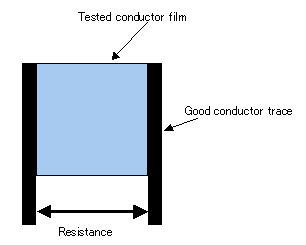
Fig. 1.1
I started to enter the analysis object to Sonnet.
I drew a 5.0mm*5.0mm sheet metal of which sheet resistance was 500 ohms, and placed 2 trace lines contacting to a pair of facing sides. The port used here is an ungrounded internal port of Sonnet.
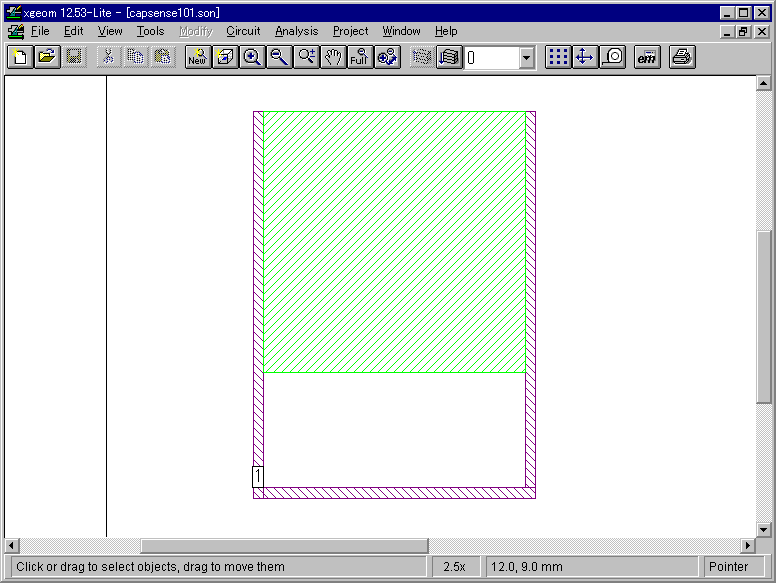
Fig. 1.2
Sonnet has a measure to enter a sheet resistance of metal. In this window I entered the sheet resistance, 500 homs.

Fig. 1.3
Then I ran analysis at 1MHz. After analysis I ran emgraph and set the curve setting like below.
Data Type: Z Params
Data Format: Real
Data Format: Real
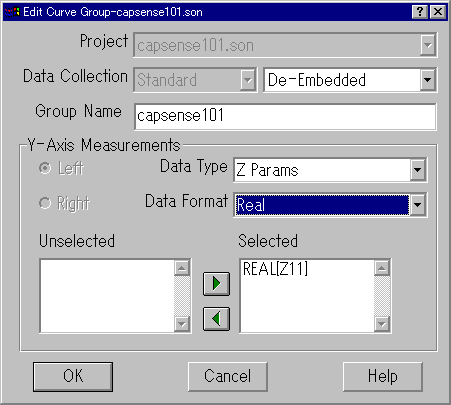
Fig. 1.4
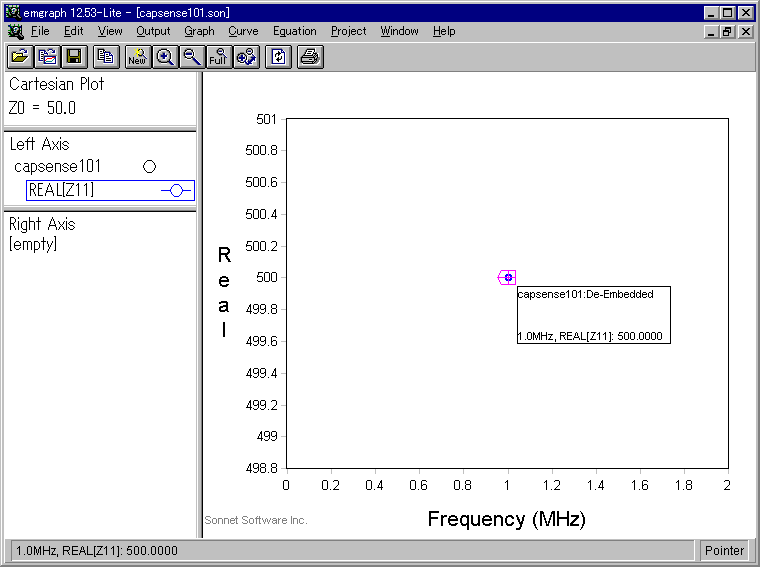
Fig. 1.5
Then I got the resistance, 500 ohms. This is entirely identical to the sheet resistance.
2. Analysis of a diamond-shape metal
Second I analyzed a diamond-shape metal. This shape is often seen in a touchpad electrode.The length of the horizontal and vertical diagonal line is 5.2mm. But the editor resolution of Sonnet was set to 0.2mm. So the entered shape was rounded to the staircase shape in Fig. 2.1.
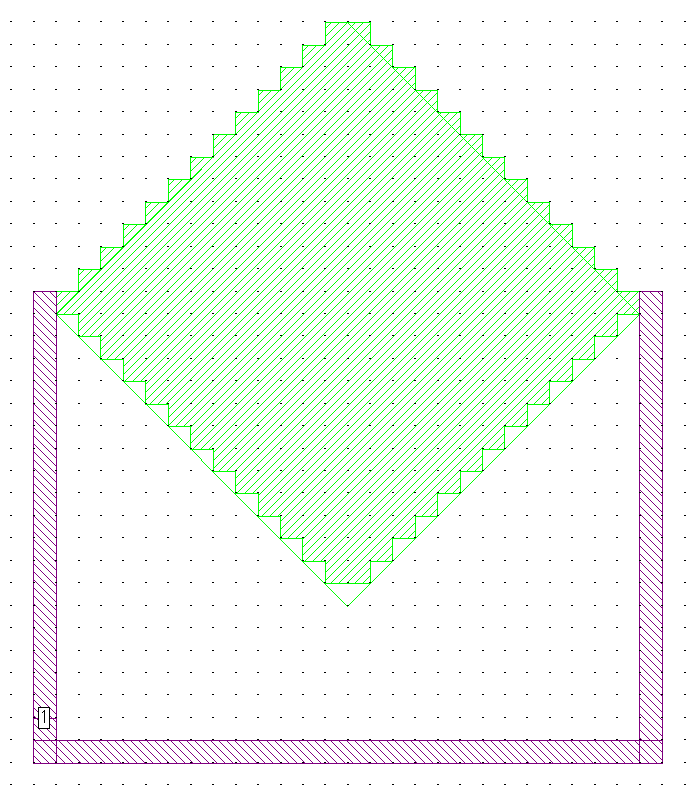
Fig. 2.1
I got 2935 ohms in this unit shape. Required memory by this analysis was 2MB.
Then I made an analysis of 3 successive units of the diagonal electrode. The required memory by this analysis was 13MB and nearly the limitation of Sonnet Lite. I can not analyze longer electrode with Sonnet Lite.
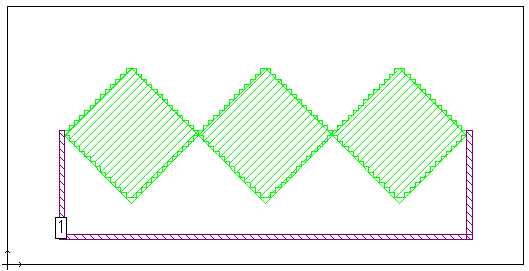
Fig. 2.2
I got 8805 ohms. This is just 3 times as big as the basic unit resistance, 2935 ohms.
Then we understand that we just add the resistance of a basic unit repeatedly so as to calculate the resistance of a longer electrode. That is, you have 10 units of the diagonal then the resistance would be 29.35k ohms.
3. Conclusion
I showed that we could easily calculate resistance of a metal sheet with an EM simulator. Without an EM simulator we have to use Van der Pauw method or something complicated.Use of an EM simulator is actually wider. Its application is not limited to RF application.
End of document.
Issued on August 26, 2009
